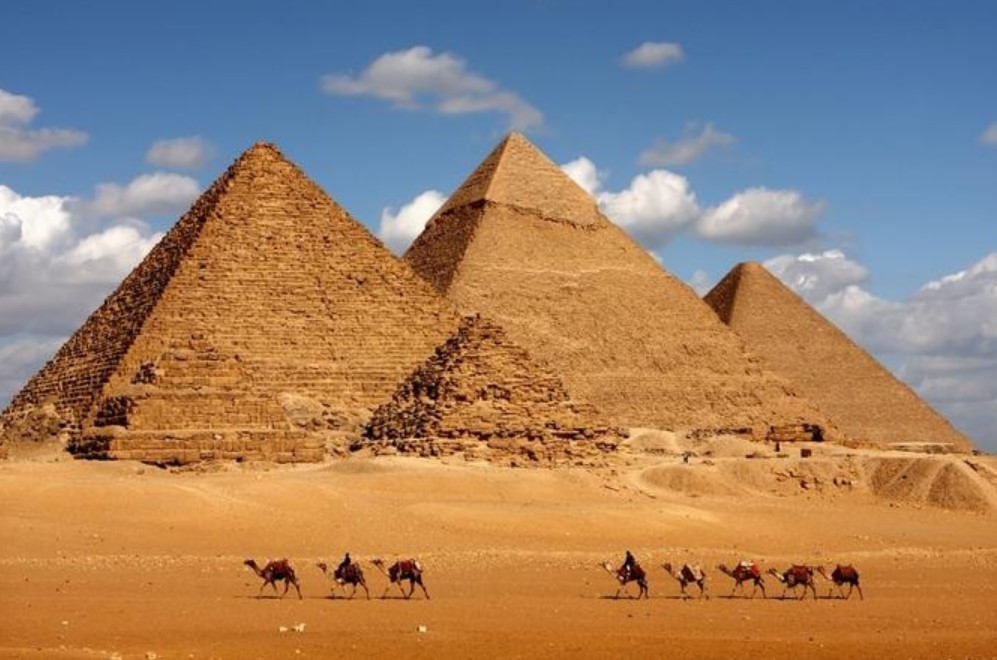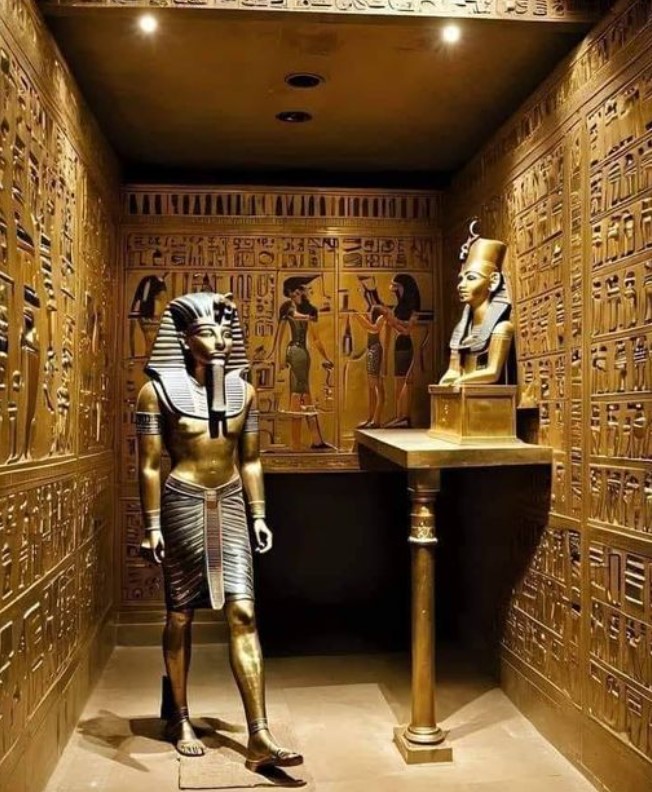The ancient Egyptian civilization, which emerged more than 5,000 years ago along the banks of the Nile River in northeastern Africa, remains one of the most influential and fascinating cultures in human history. Flourishing for 3,000 years, the Egyptians left behind a rich legacy of monumental architecture, cultural advancement, and spiritual practices. Their ability to harness the power of the annual flooding of the Nile to cultivate crops in the desert was a key factor in their success. From the construction of iconic pyramids to complex religious beliefs and exquisite art, ancient Egypt continues to fascinate and inspire. Let’s explore more ancient civilizations with archeology.dulichvn.net
The Importance of the Nile River to Ancient Egypt Ancient Egyptian Civilization
A Lifeline for Agriculture
The Nile River was the lifeblood of ancient Egyptian civilization. Its annual floods provided vital water and fertile soil to the surrounding desert, creating ideal conditions for farming. As the waters receded, they left behind nutrient-rich silt that made the land perfect for growing essential crops like wheat, barley, and vegetables. This agricultural abundance allowed Egypt to become a powerful and prosperous society, capable of supporting large populations and developing complex infrastructure.

Nile Flooding and Its Predictability
The predictability of the Nile’s flooding was critical to the agricultural success of Egypt. The floods would occur at approximately the same time each year, allowing farmers to plan their crops effectively. This stability played a crucial role in Egypt’s development, providing a reliable food supply and fostering economic growth. The ancient Egyptians worshipped the Nile as a divine entity, seeing it as a god that brought life to their land.
Economic and Cultural Hub
The Nile wasn’t just essential for farming; it also served as the main route for transportation and trade. Egypt’s access to the river allowed for the movement of goods like grain, papyrus, and luxury items across the region. Trade along the Nile connected Egypt to neighboring civilizations, including those in Nubia, Mesopotamia, and the Mediterranean, contributing to Egypt’s wealth and cultural exchange.
Monumental Achievements: The Pyramids and Beyond
The Great Pyramids of Giza
Arguably the most iconic symbols of ancient Egyptian civilization are the pyramids, particularly the Great Pyramid of Giza, one of the Seven Wonders of the Ancient World. These massive stone structures were built as tombs for pharaohs and are a testament to the Egyptians’ advanced engineering skills. The construction of these pyramids required extraordinary planning, labor, and precision, and their enduring presence continues to awe visitors and scholars alike.

Sphinx and Temple Complexes
In addition to the pyramids, the Sphinx and various temple complexes such as the Karnak Temple and Luxor Temple serve as reminders of Egypt’s architectural genius. These monuments were not only designed for religious purposes but also to demonstrate the power and authority of the pharaohs. The Egyptian pyramids and temples, with their towering structures and intricate carvings, were designed to honor gods and ensure the pharaohs’ journey to the afterlife.

Engineering and Construction Techniques
The ability to create these monumental structures without modern technology is one of the most impressive aspects of ancient Egyptian architecture. Using primitive tools and a highly organized labor force, Egyptians perfected techniques that allowed them to quarry massive stones, transport them, and position them with incredible accuracy. Their engineering expertise laid the foundation for future architectural achievements across the ancient world.
Cultural and Religious Innovations
Polytheism and Egyptian Gods
Religion played a central role in daily life in ancient Egypt. The Egyptians practiced polytheism, worshipping a vast pantheon of gods and goddesses, each with distinct roles and powers. Ra, the sun god, was perhaps the most revered, symbolizing creation and the cycle of life. Osiris, the god of the afterlife, was also central to Egyptian beliefs. The relationship between gods and humans was deeply intertwined, with rituals and offerings performed to maintain cosmic order and secure the favor of the gods.

The Concept of the Afterlife
The Egyptians believed in an afterlife, where the soul would journey through the Field of Reeds to reach eternal life. This belief led to the practice of mummification, where the body was preserved for the journey ahead. The process of mummification was a complex ritual involving the removal of internal organs, drying the body, and wrapping it in linen. The tombs of the pharaohs, such as the Valley of the Kings, are filled with elaborate burial goods, designed to help the deceased navigate the afterlife.
Artistic Mastery
Egyptian art was highly symbolic, adhering to strict conventions that communicated the social status, role, and divine connection of individuals. Wall paintings, sculptures, and reliefs often depicted gods, pharaohs, and everyday life, with an emphasis on order and harmony. The use of color, profile views, and symbolism in their art created a visual language that has endured for millennia, offering us valuable insights into ancient Egyptian society.
Legacy of Ancient Egypt in Modern Times
Influence on Architecture and Engineering
The achievements of ancient Egypt continue to influence modern architecture and engineering. The precise construction of the pyramids and temples, as well as the use of monumental structures to convey power and divine authority, can be seen in later civilizations. The engineering methods developed by the Egyptians laid the groundwork for many innovations in building design, including the use of arches and columned structures.

Cultural Preservation
The legacy of ancient Egypt is not only visible in its monuments but also in the preservation of hieroglyphic writing, which has provided historians with invaluable information about the culture. Hieroglyphs were used to record religious texts, laws, and historical events, offering a window into the past. Modern archeologists continue to study these writings, unraveling more about Egyptian society, politics, and daily life.
Ongoing Fascination and Research
Even today, the ancient Egyptians continue to captivate the world. Researchers and archaeologists regularly uncover new artifacts and tombs, deepening our understanding of their culture. The mysteries surrounding Egypt’s past, including the purpose of the pyramids and the secrets of the pharaohs’ tombs, continue to fuel public imagination and scholarly investigation.
Conclusion
The Ancient Egyptian civilization was a marvel of innovation and cultural richness, thriving for over 3,000 years in one of the harshest environments on earth. The Egyptians’ ability to transform the landscape of the Nile River into a hub of agriculture, commerce, and monumental construction speaks to their ingenuity and adaptability. From their grand pyramids to their complex religious beliefs, Ancient Egypt has left a legacy that continues to inspire awe and curiosity today. Their achievements in architecture, art, and spirituality are not just relics of the past but pillars of human progress, influencing generations long after the fall of their civilization. The mysteries of Egypt remain a source of fascination, and as modern archaeology continues to uncover more, we gain deeper insights into this extraordinary civilization’s remarkable legacy.


CÁC TIN KHÁC
Mark Twain & Olivia Langdon: A 36-Year Love Story Filled with Laughter and Devotion
The Tollund Man: A 2,400-Year-Old Mystery Preserved in a Danish Bog
Skara Brae: Scotland’s Hidden Neolithic Village
Porta Nigra: The Hidden Depths of Trier’s Iconic Roman Gate